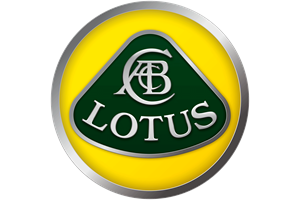


This edition of the Lotus Exige 240 R is the 6 speed / Manual version and was first brought out in 2005. This was at around the same time as the introduction of the 2006 Caparo T1 2.4 V8 and the 2005 Bugatti Veyron 8.0 litre W16.This particular Lotus Exige has a 1796cc Naturally Aspirated Petrol powerplant with 4 cylinders in a St formation.
The Exige shares its Petrol St4 engine configuration with the likes of the 2019 Ariel Atom 4 2.0 Turbo and the 2013 Caterham 7 620 R 2.0 L Supercharged. If you're looking for other fast cars which share the Exige's Rear Wheel Drive, Coupe combination then how about the 1982 Fiat X1/9 1.5 8V or the 1965 Aston-Martin DB6 1965.
Weighing in at 930 kgs (2050 lbs) this makes the Lotus Exige 240 R in the same weight category as the 2020 Lotus Elise Sport 220 1.8 Supercharged or the give or take 50kg.
![Mini Cooper John Cooper Works Cabrio 2.0 Turbo - [2022] image Mini Cooper John Cooper Works Cabrio 2.0 Turbo - [2022] image](/editionimages/2340.jpg)
The Lotus Exige shares the same bhp with the 2022 Mini Cooper John Cooper Works Cabrio 2.0 Turbo (228 bhp)
In terms of power the 1796cc 16V St4 engine produces 243 bhp (181 kW) @ 8000 rpm similar to the 2022 Mini Cooper John Cooper Works Cabrio 2.0 Turbo (228 bhp) or the 2021 Ford Mustang Mach-E AWD (266 bhp).
The Naturally Aspirated St4 throws out 174 lb-ft (235.9 Nm) @ 7000 rpm placing it with cars of similar torque performance figures such as the 2022 Mini Cooper Countryman John Cooper Works 1.5 Turbo (162 lb-ft) or the 2020 Abarth 695 70th Anniversario 1.4 Turbo (184 lb-ft).
If one combines the weight with power or torque performance for the Lotus Exige you can get a better idea of it's real world performance.
![Mercedes SL Class 65 AMG V12 R230 - [2004] image Mercedes SL Class 65 AMG V12 R230 - [2004] image](/editionimages/1212.jpg)
The 2004 Mercedes SL Class 65 AMG V12 R230 (286.2 bhp per ton) has similar Bhp Per Ton stats as the Lotus Exige.
The Lotus Exige has a Power to weight ratio of 261.2 bhp per ton and 187.0 lb-ft per ton. Bhp Per Ton figures of the 2005 Exige competing with the 2004 Mercedes SL Class 65 AMG V12 R230 (286.2 bhp per ton) or the 2009 Audi R8 6.0 Quattro V12 TDI (285.7 bhp per ton).
If you agree with the late great Carroll Shelby then arguably an even better indicator of potential performance, Torque. Use weight as well and you end up with - Torque per ton, with the Lotus Exige generating around 187.0 lb-ft per ton. If you're curious as to what other cars have as much torque to weight then look no further than the 1960 Pontiac Bonneville 6.4L V8 (212.0 lb-ft per ton) or the 1960 Pontiac Bonneville 6.4L V8 (212.0 lb-ft per ton).
With a 0-60mph time of 3.90 secs or a 0-100km/h (0-62mph) of 4.0 secs, this made the Lotus Exige 240 R as fast as the 2022 BMW 2 Series M2 3.0 Twin Turbo G87 Steptronic (3.90 secs) the 2022 Porsche 911 Sport Classic 3.7 Turbo 992 (3.90 secs) the 2022 Volkswagen-VW Golf R Performance 2.0 Turbo (3.90 secs) the or the 2021 Porsche Taycan 4S Cross Turismo (3.90 secs). This Lotus Exige 240 R is also faster than the 3996 Bentley Continental GT 4.0 V8 Turbo Convertible (4.00 secs) the 2022 Lotus Emira First Edition 3.5 V6 Supercharged Auto (4.00 secs) the 2021 Audi e-tron GT Quattro (4.00 secs) the and the 2020 BMW 4 Series M4 Coupe 3.0 Bi Turbo G82 (4.00 secs).
When talking about the performance of the Lotus Exige on the drag strip it can reach a quarter mile in an estimated 12.91 secs @ 106.0 mph. Similar performance down the quarter mile can be found with the the 2008 Audi Q7 6.0 V12 TDi Quattro (12.85 secs), the 1996 Maserati Quattroporte 3.2 V8 Biturbo (12.85 secs), and the 2013 Maserati Ghibli S 3.0 V6 Turbo (12.86 secs).
Modern performance cars are often artificially restricted to 155mph. The 2005 version of the Lotus Exige 240 R has a maximum speed of 155mph.
If maxing out your car on the AutoBahn is your thing and you're wondering what's faster than the 2005 Lotus Exige 240 R then how about the 2024 Ford Mustang Dark Horse 5.0 V8 (166 mph), the 2022 Ford Mustang GT 5.0 V8 (166 mph), or the 2021 Ford Mustang Mach 1 5.0 V8 (166 mph).










Audi A7 3.0 TDI Sportback Competition Quattro
Engine: Turbo Diesel | 2967cc 24v V6
Top Speed: 155 mph
0-60mph: 4.90 seconds

Ferrari 250 Europa
Engine: Naturally Aspirated Petrol | 2963cc 24v V12
Top Speed: 217.2 kph
0-100kph: 9.2 seconds



















